Occupational Safety Training for Tennis Ball Manufacturing
99,000 ₫
Note: The above price is calculated per person and may vary depending on the number of trainees participating in the course and market fluctuations. For more accurate pricing support, please refer to the price list or contact our consultants directly.
Occupational safety is an important issue in tennis ball manufacturing plants and needs to be addressed promptly to ensure the health and safety of workers and enhance the reputation of businesses. The Occupational Safety Training course is one of the most effective solutions to raise awareness of accident prevention for workers involved in tennis ball manufacturing.
Table of Contents
Toggle1. Overview of Tennis Balls
a. What is a Tennis Ball?
A tennis ball is a type of ball used in the sport of tennis. It is an essential item in the tennis game and is designed with special characteristics to comply with the rules and requirements of this sport.
Characteristics of Tennis Balls:
- Size and Weight: A tennis ball has a diameter of about 6.7 cm and weighs between 56 to 59 grams.
- Material: Tennis balls are made from natural rubber, covered on the outside with a layer of felt, usually yellow or green for easy visibility on the court.
- Structure: Tennis balls have a spherical structure with a rubber layer containing gas inside. When the ball hits surfaces, the gas inside helps produce the required bounce.
- Pressure: Tennis balls are pressurized with gas to achieve the necessary bounce and response.
Function in Tennis:
- Resistance: Tennis balls are designed to withstand strong impacts from rackets and court surfaces without breaking or deforming much.
- Bounce: The bounce of the ball helps create varied shots and plays during the match.
Tennis balls play an important role in determining the quality of the game and affect how shots are executed.

b. Types of Machinery for Tennis Ball Production
1. Rubber Press Machine
- Function: Pressing and shaping the inner rubber layer of the ball.
- Process: Liquid rubber is poured into molds and pressed at high temperatures to form the spherical shape of the ball.
2. Cutting and Shaping Machine
- Function: Cutting and shaping the felt layers to cover the ball.
- Process: Felt layers are cut into precise shapes and glued onto the ball after the rubber layer has been formed.
3. Air Pump Machine
- Function: Pumping air inside the ball to achieve the required bounce.
- Process: Balls are inflated at a certain pressure to ensure bounce performance and durability.
4. Felt Gluing Machine
- Function: Gluing the felt layer onto the inner rubber layer of the ball.
- Process: Felt layers are firmly glued to the ball’s surface using special adhesives or heat bonding techniques.
5. Quality Inspection Machine
- Function: Checking the bounce, size, weight, and other quality standards of the balls.
- Process: Balls are tested using measurement and inspection devices to ensure they meet specified standards.
6. Packaging Machine
- Function: Packaging tennis balls into bags or boxes.
- Process: Balls are packed in protective packaging to prepare for transportation and distribution.
7. Cleaning Machine
- Function: Cleaning the balls to remove dust and ensure aesthetic quality.
- Process: Balls are cleaned using specialized cleaning equipment.

c. Famous Tennis Ball Manufacturing Brands
1. Wilson
- Information: Wilson is one of the most famous brands in the tennis ball manufacturing industry, known for the high quality and durability of its products.
- Featured Products: Wilson US Open, Wilson Pro Staff.
2. Babolat
- Information: Babolat is a renowned French brand known for high-performance products and advanced technology.
- Featured Products: Babolat Roland Garros, Babolat Pure Drive.
3. Head
- Information: Head is a well-known brand in the sports industry, especially recognized for quality tennis balls.
- Featured Products: Head ATP, Head Pico.
4. Prince
- Information: Prince is famous for innovative tennis products and advanced technology.
- Featured Products: Prince Tour, Prince Original.
5. Dunlop
- Information: Dunlop is a long-established sports brand, notable for high-quality tennis balls.
- Featured Products: Dunlop ATP, Dunlop Fort.
6. Tretorn
- Information: Tretorn is a Swedish brand famous for environmentally friendly tennis balls.
- Featured Products: Tretorn Micro-X, Tretorn Comfort.
7. Yonex
- Information: Yonex is a Japanese brand known for quality sports products, including tennis balls.
- Featured Products: Yonex Tour, Yonex Poly Tour.
8. Slazenger
- Information: Slazenger is a long-established brand known for durable and quality tennis balls.
- Featured Products: Slazenger Wimbledon, Slazenger Classic.
9. K-Swiss
- Information: K-Swiss is a well-known brand with sports products including tennis balls.
- Featured Products: K-Swiss Tennis Balls.
10. Gamma
- Information: Gamma stands out with sports products and advanced technology in tennis.
- Featured Products: Gamma Professional, Gamma Ballistic.

d. Specific Jobs in a Tennis Ball Manufacturing Factory
Group 1
- Executive Director, Deputy Executive Director, Department Heads in the tennis ball manufacturing factory.
Group 2
- Safety Officers: manage factory safety, design safety procedures, supervise and encourage employees to comply with safe work processes.
Group 3
- Rubber Pressing: Rubber is placed into molds and pressed at high temperature and pressure to form the spherical shape of the ball.
- Shaping and Processing the Ball: Felt layers are cut into precise pieces and glued onto the ball surface.
- Air Pumping: Balls are inflated to precise pressure and tested to ensure uniform bounce.
- Felt Gluing: Special adhesives or heat bonding techniques are used to ensure the felt layer firmly adheres to the inner rubber layer.
- Cleaning and Processing: Cleaning equipment is used to remove any remaining dust or dirt.
- Packaging: Balls are placed into protective packaging and prepared for transportation and distribution.
Group 4
- Office work, service, sales, marketing.
- Production management, quality management, human resource management, material management, financial and accounting management.
- Research and development of new products, design of product packaging and models.
2. Overview of the Tennis Ball Production Occupational Safety Training Course
Within the scope of this article, we focus on issues surrounding Group 3, because Group 3 is the group directly involved in the production process and faces the highest occupational safety risks. For reference to other groups, see here
a. What is Group 3 Occupational Safety Training?
- Group 3 Occupational Safety Training consists of sessions that equip workers with awareness on how to prevent occupational accidents.
- The safety training course helps workers recognize and avoid hazards, reducing the risks of occupational accidents during work.
REGISTER FOR OCCUPATIONAL SAFETY TRAINING SERVICE
b. Training Duration
Initial safety training duration
- Total training time is at least 24 hours, including examination time.
- 8 hours of theory on the system of policies and laws regarding occupational safety and hygiene
- 8 hours of theory on basic knowledge of occupational safety and hygiene
- 4 hours of theory on specialized training content
- 2 hours of practical training on specialized content
- 2 hours of theoretical examination at the end of the training course
The safety training center will arrange the training time over multiple sessions depending on the work schedule of employees. Usually, there will be 6 training sessions over 3 days, provided the manufacturing enterprise can arrange continuous training time.
Periodic safety training duration
- Before the occupational safety card expires, workers who want to renew it must undergo a periodic occupational safety training course, with the periodic training duration being at least 50% of the initial training duration.
Explanation: The total periodic occupational safety training time is at least 12 hours, including examination time. After completing the periodic training and passing the test, workers will be re-issued or have their occupational safety card renewed.
c. Training Content
| No. | TRAINING CONTENT | TRAINING TIME (HOURS) | |||
| Total | Including | ||||
| Theory | Practice | Examination | |||
| I | System of policies and laws on occupational safety and hygiene | 8 | 8 | 0 | 0 |
| 1 | Overview of the system of legal documents on occupational safety and hygiene. | 6 | 6 | ||
| 2 | System of standards and technical regulations on occupational safety and hygiene. | 1 | 1 | ||
| 3 | Specific regulations of state management agencies on occupational safety and hygiene when constructing new, expanding, or renovating facilities for production, usage, storage, and inspection of machinery, equipment, materials, and substances with strict occupational safety and hygiene requirements. | 1 | 1 | ||
| II | Basic knowledge of occupational safety and hygiene | 8 | 8 | 0 | 0 |
| 1 | Basic knowledge of hazardous and harmful factors at the workplace. | 4 | 4 | ||
| 2 | Methods to improve working conditions. | 1 | 1 | ||
| 3 | Safety culture in production and business. | 1 | 1 | ||
| 4 | Rights and obligations of employers and workers; policies and regimes on occupational safety and hygiene for workers; functions and duties of safety and hygiene network staff. | 1 | 1 | ||
| 5 | Occupational safety and hygiene rules, safety and hygiene signs and instructions, use of safety equipment and personal protective equipment; skills in first aid for occupational accidents and prevention of occupational diseases. | 1 | 1 | ||
| III | Specialized training content | 6 | 4 | 2 | 0 |
| Comprehensive knowledge about types of machines, equipment, substances causing hazardous and harmful factors; analysis, evaluation, and risk management of occupational safety and hygiene; safe working procedures with machines, equipment, and substances with strict occupational safety and hygiene requirements. | 6 | 4 | 2 | ||
| IV | Final training content examination at the end of the course | 2 | 2 | 0 | 0 |
| Total | 24 | 22 | 2 | ||
See more training contents of the 6 groups
d. Occupational Safety Card
After completing the occupational safety training course and passing the test, workers will be issued an Occupational Safety Card (commonly called the Occupational Safety Certificate for Group 3).
This Group 3 safety card clearly displays information such as full name, date of birth, job and specific working environment. It also includes training duration, red stamp, and signature confirming completion of the training course.
According to the regulations on card issuance stated in Clause 2 of Article 24 of Decree 44/2016/ND-CP, there are two cases:
- If there is an employment contract between the employer and the employee, the employer must sign, stamp, and endorse the safety card for the Group 3 worker after the worker has completed training from a safety training unit and passed the test.
- If the worker is freelance, seasonal, or does not have an employment contract, the training unit must sign, stamp, and endorse the safety card for the worker after completing the training and passing the test.

3. Identifying Hazards Affecting Workers in Tennis Ball Production
Chemical Hazards
- Hazard: The use of rubber, adhesives, and other chemicals in the production process may cause respiratory issues, skin allergies, and other health problems.
Machinery Hazards
- Hazard: Rubber pressing machines, air pumps, and felt gluing machines can cause injuries due to contact with moving parts or equipment accidents.
High Temperature Hazards
- Hazard: Processes such as rubber pressing require high temperatures, which may cause burns or other health issues.
High Humidity Hazards
- Hazard: High humidity can cause health problems such as infections or respiratory diseases.
Noise Hazards
- Hazard: Noise from machinery may cause hearing problems or stress.
Hazards from Hard and Heavy Objects
- Hazard: Materials and products may cause injuries if not handled properly.
Electrical Hazards
- Hazard: Electrical faults can cause electric shocks or fires.
Hazards from Sharp or Stimulating Objects
- Hazard: Sharp or edged materials may cause injuries.
Process Error Hazards
- Hazard: Errors in the production process can cause accidents or non-compliant products.

4. Safety Measures When Participating in Tennis Ball Production
Training and Education
- Safety training: Provide safety training programs for all employees on how to operate machinery, handle chemicals, and basic safety rules.
- Equipment operation training: Ensure employees are fully trained on safe operation of machinery and equipment.
- Knowledge updates: Provide periodic training and updates on new processes and equipment.
Use of Personal Protective Equipment (PPE)
- Masks and respirators: Wear masks or respirators to protect the respiratory system from dust, chemical fumes, and harmful substances.
- Protective gloves: Use gloves to protect hands from chemicals, high temperatures, and sharp objects.
- Safety goggles: Wear goggles to protect eyes from dust, debris, and chemicals.
- Safety shoes: Use safety shoes with hard toes to protect feet from impacts and heavy objects.
- Protective jackets: Wear protective jackets or uniforms to shield the body from high temperatures and materials.
Chemical Management
- Safe storage: Store chemicals according to regulations and ensure clear labeling.
- Proper use and handling: Monitor and guide safe chemical use, including wearing PPE and working in well-ventilated areas.
- First aid availability: Ensure first aid kits and chemical incident procedures are available.
Equipment Maintenance and Inspection
- Regular maintenance: Perform regular maintenance and inspection of all machinery and equipment to ensure proper functioning.
- Pre-use checks: Inspect equipment before use to detect and fix potential faults.
Risk Management
- Risk assessment: Conduct regular risk assessments to identify and manage potential hazards.
- Emergency planning: Develop and implement emergency response plans, including evacuation instructions and necessary steps during incidents.
Health Protection
- Health monitoring: Monitor employee health and provide regular medical check-ups.
- Medical services provision: Ensure medical services are available and accessible when needed.
- Periodically conduct work environment monitoring in factories, collect and analyze harmful factors affecting workers, thereby adjusting to reduce risks to prevent occupational diseases.
Electrical Safety
- Electrical system inspection: Conduct regular inspection and maintenance of electrical systems to ensure safety.
- Electrical safety training: Train employees on electrical safety and how to handle electrical incidents.
Temperature Risk Management
- Cooling systems: Ensure cooling systems work effectively in high-temperature areas.
- Provision of drinking water: Provide sufficient drinking water and encourage employees to stay hydrated to prevent dehydration.
Structural and Process Safety
- Compliance with procedures: Ensure all production processes and safety rules are strictly followed.
- Process monitoring: Monitor production to detect and promptly address issues.
Use of Safety Equipment
- Machine protection devices: Use machine guards such as shields and moving part protectors to prevent accidents.
- Maintenance: Maintain equipment to ensure proper operation and minimize malfunctions.
5. Benefits of Safety Training for Tennis Ball Production
An Toàn Nam Việt provides your enterprise with excellent benefits after completing safety training courses according to the regulations in Decree 44/2016/ND-CP on Occupational Safety and Hygiene. Companies, factories, and businesses will gain:
- Workers can identify potential occupational accident risks and take preventive measures to avoid accidents.
- Your enterprise can establish preventive measures against risks in production, operation, and maintenance processes.
- Reduce costs when safety risks occur during labor.
- Continuous production without interruption helps increase labor productivity and product quality.
- Comply with occupational safety laws to avoid legal risks.
- Build reputation and professionalism in all aspects, thereby elevating your enterprise’s brand.
Nam Việt’s training courses are solutions to prevent and combat external factors affecting individuals, helping them avoid dangers that could lead to injuries or worse, death.
REGISTER FOR OCCUPATIONAL SAFETY TRAINING SERVICE
6. Customer Feedback After Completing Tennis Ball Production Safety Training
An Toàn Nam Việt has many years of experience accompanying numerous enterprises across Vietnam, especially in the southern provinces. This responsibility is extremely valuable to Nam Việt, so our Occupational Safety Training is increasingly professional. The motivation for An Toàn Nam Việt’s growth comes from positive feedback and suggestions from enterprises. Below are some testimonials from our valued partners we have served.
Hoa Dat Construction and Trading Joint Stock Company
“Nam Việt’s service helped us greatly in simplifying occupational safety and completing safety dossiers to support work processes. The consulting team is enthusiastic and timely in responding to our questions. 5 stars for Nam Việt.”
See more customer interviews after using An Toàn Nam Việt’s services
7. An Toàn Nam Việt’s Occupational Safety Training Capabilities
An Toàn Nam Việt is a reputable and quality occupational safety training center in Vietnam. Our safety training sessions are continuously held at manufacturing workshops, factories, or construction sites nationwide (all 63 provinces of Vietnam).
REGISTER FOR OCCUPATIONAL SAFETY TRAINING SERVICE
Occupational Safety Training License
- An Toàn Nam Việt has been inspected and certified by the Safety Department of the Ministry of Labor – Invalids and Social Affairs as qualified to conduct occupational safety and hygiene training. This further strengthens our capacity in occupational safety training.

Training Materials and Lectures
- Before use in occupational safety training courses, materials are reviewed and approved to ensure accuracy and effective application.
- Our instructors’ teaching methods are standardized according to An Toàn Nam Việt’s teaching standards, developed by experts in occupational safety and hygiene training to maximize knowledge absorption.
Facilities
- Controlling classroom conditions impacts training efficiency and learners’ knowledge absorption.
- Our training facilities provide spacious classrooms meeting standards for area, lighting, training equipment, etc.
8. Nationwide Reputable and Quality Safety Training Center
At An Toàn Nam Việt, we always prioritize the professional dedication to occupational safety training. For us, imparting self-protection knowledge to workers so they have safety tools on their livelihood journey contributes to national development.
To ensure effective training, we meticulously prepare every small detail, from tools, equipment, teaching materials, sound, to lighting.
Our safety training instructors are experts with many years of experience. They even have research projects identifying hazards in all occupations and prevention methods.
Their lectures are practical, conveyed vividly and clearly to workers. These factors help learners feel comfortable and absorb the training well. Of course, the knowledge provided strictly follows Decree 44/2016/ND-CP.
Thus, workers grasp many hazard prevention measures and how to protect themselves. They also apply them appropriately in actual work.
Our training center proudly provides reputable, professional occupational safety training services with the following advantages:
- Competitive training costs while ensuring quality.
- Flexible training schedules adapted to company production.
- Quick and lawful certification procedures.
- Experienced and skilled instructors.
- Classrooms controlled for factors that affect training efficiency and knowledge absorption.
- Training materials tailored to occupational safety in enterprises.
- An Toàn Nam Việt works dedicatedly and professionally to provide accurate and fastest customer support.

9. Additional Reference Materials for Tennis Ball Production Safety Training
- Tennis ball production occupational safety materials
- Occupational safety training material sets
- Occupational safety training test sets
- Tennis ball production occupational safety training syllabus
- Tennis ball production occupational safety multiple-choice test
No comments yet

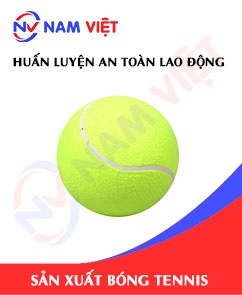
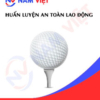
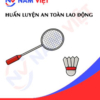



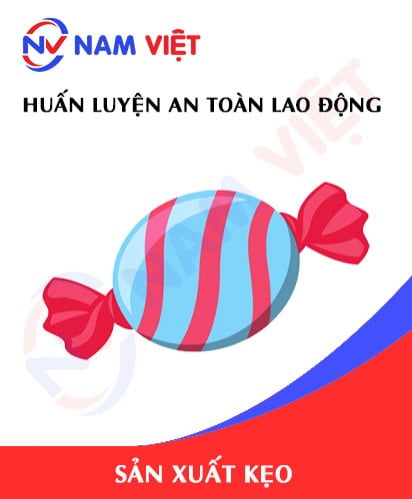

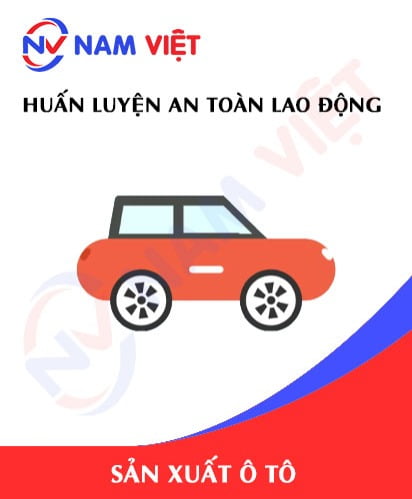
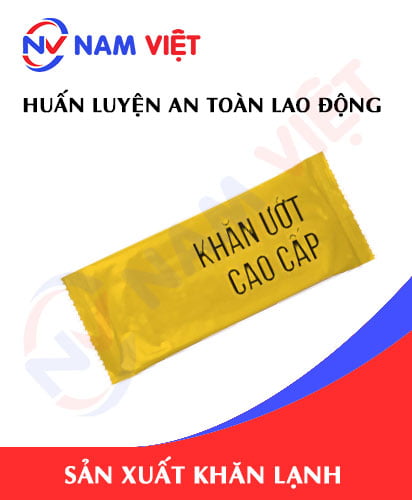
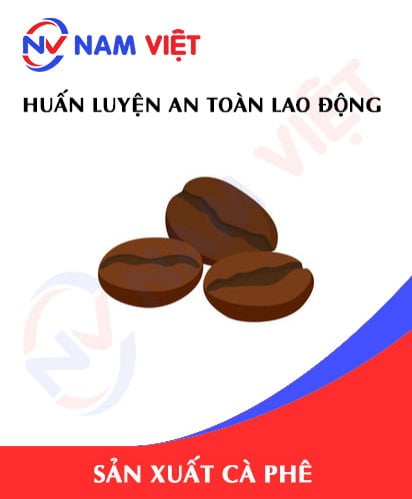
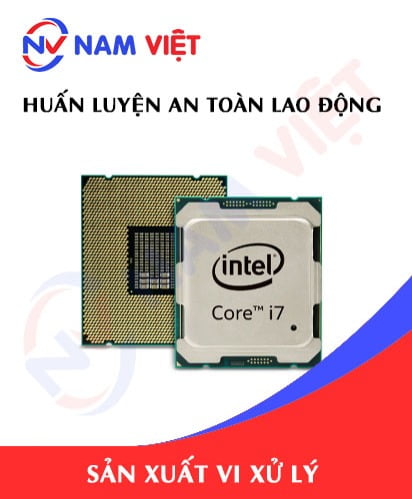
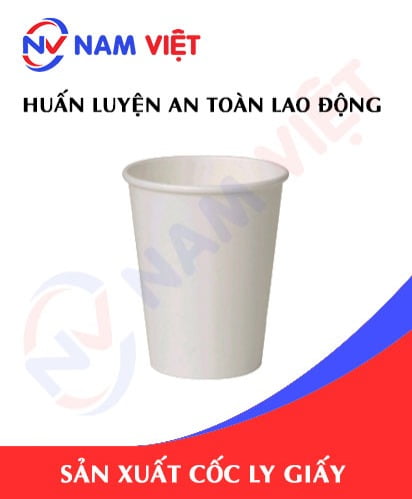
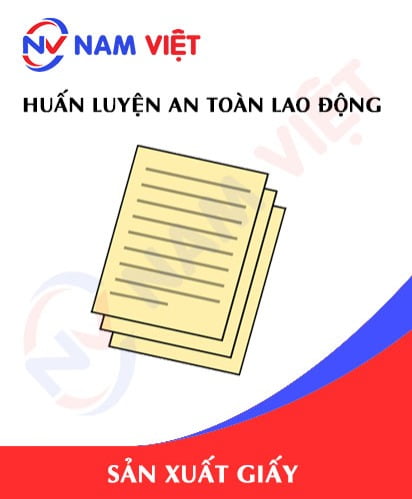
Review Occupational Safety Training for Tennis Ball Manufacturing
There are no reviews yet.